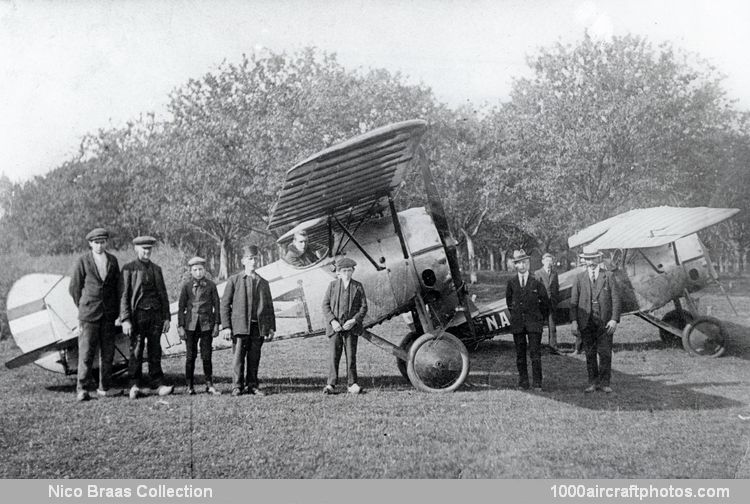08/31/2017. Remarks by Johan Visschedijk: "In July 1918, Walter Rethel initiated design of a single-seat parasol-wing fighter monoplane patterned on the Fokker E V (D VIII) and designated E.III by the Kondor Flugzeugwerke at the airport Gelsenkirchen-Essen-Rotthausen, in Essen, Germany. A unique cantilever wing construction was devised for the new fighter and patented by Kondor. This consisted of thin veneer sheets laid chordwise across the wing between protruding ribs to which the veneer was attached with opposing L-shaped strips. This wing structure was exceptionally robust and, according to Kondor, the protruding ribs resulted in improved aerodynamic characteristics.
Powered by a 140 hp Oberursel Ur III rotary, the E.III was sent to Adlershof near Berlin for type test in September 1918, and participated in the Third Fighter-type contest held in the following month. The E.III was reported as having excellent flying characteristics only marginally inferior to those of the Siemens-Schuckert D IV, and its wing did not oscillate at high speeds as did that of the Fokker D VIII. Hauptman Eduard Ritter von Schleich, commanding officer of Jagdgeschwader 4, regarded the E.III as the best fighter of the competition. A second E.III (referred to by Kondor as the E.IIIa) was built with a new 160 hp Goebel Goe III rotary engine, having a full cowling rather than the cutaway horseshoe-type cowling partly enclosing the Ur III rotary. This version had a max speed of 124 mph (200 kmh) and attained an altitude of 16,405 ft (5,000 m) in 11 min.
It is not known with certainty how many were built, although it is believed that some eight to ten were completed. After WW I, a single E.IIIa was acquired by the Swiss Comte, Mittelholzer concern for aerobatic displays, two others being procured by the N.A.V.O. (Nederlandsche Automobiel- en Vliegtuig Onderneming, Dutch Car and Aircraft Company) early in 1920."
